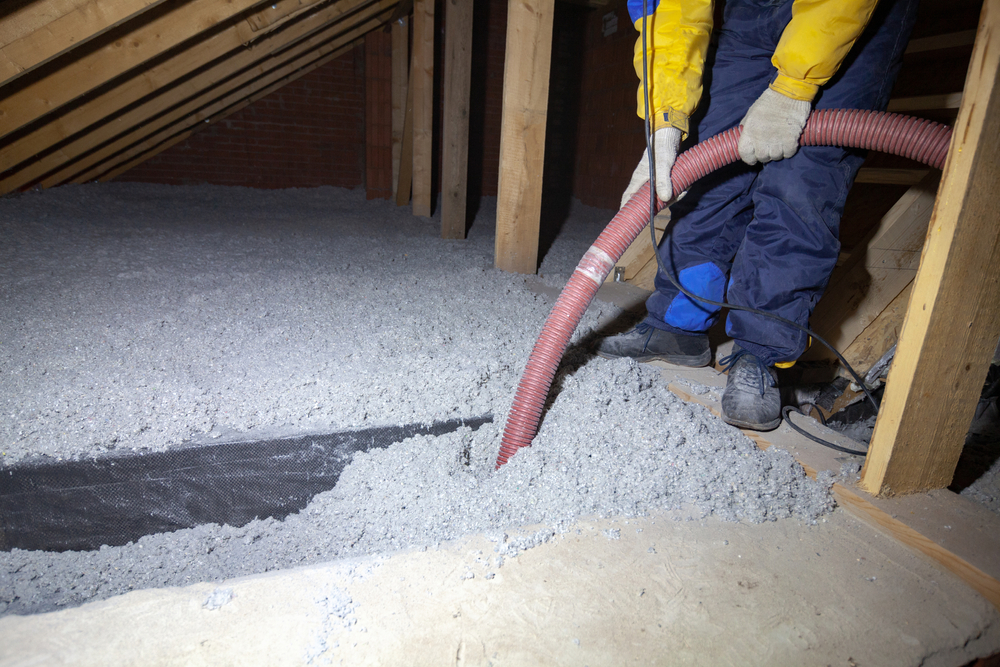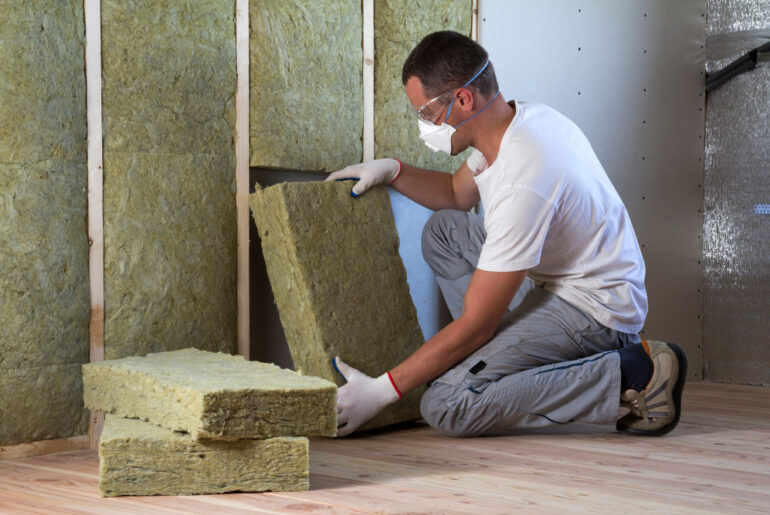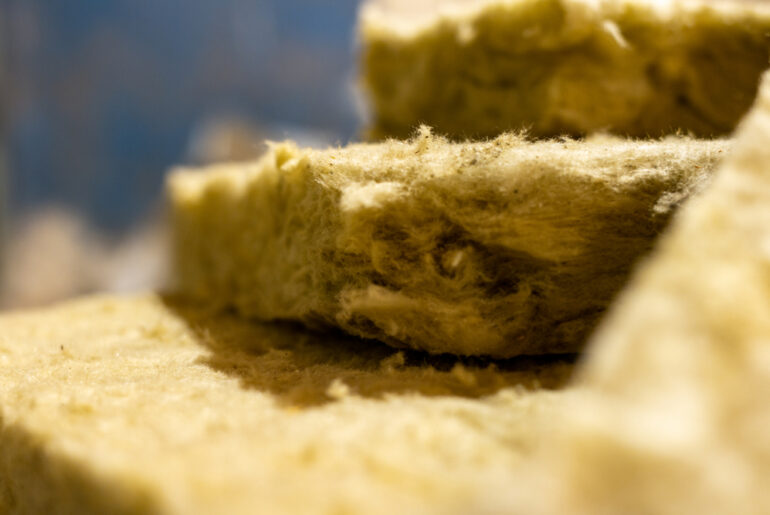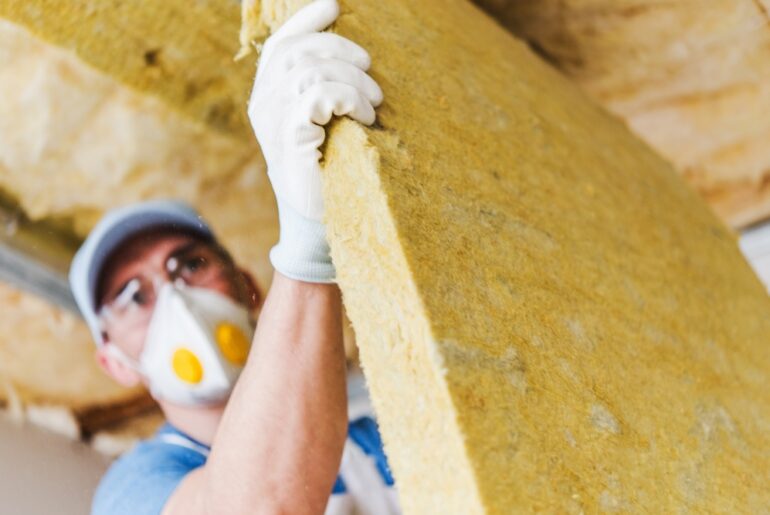If you’re planning to install new insulation, upgrade your existing one, or improve your home’s R-value using blow-in insulation, its lifespan is definitely a key consideration.
Blow-in insulation typically lasts long due to its durability, but its lifespan may vary depending on the type used. Fiberglass blow-in usually lasts about 80 to 100 years, while cellulose blow-in lasts about 20 to 30 years. However, blow-in insulation tends to settle over time, reducing its longevity.
Before you decide, you must learn more about the differences between the two types of blow-in insulation, how long it lasts, and what factors affect its longevity.
What is Blown-in Insulation?
Blown-in insulation, also referred to as loose-fill insulation, is a type of insulation made of the chosen loose materials that are “blown into place” using special blowing equipment. It’s commonly used to fill the joist cavities and studs, cover attic floors, and seal gaps and sneaky spots as it settles. It can even be blown into hard-to-reach places without disturbing finishes or structures.
Three blown-in insulation are typically used:
- Fiberglass loose-fill or fiberglass blown-in insulation is made from glass heated and spun or blown into fibers. Its average R-value ranges from R-2.2 to 2.7 per inch.
- Cellulose blown-in insulation is made of 85% recycled newspapers or cardboard that are shredded and chemically treated with fire-retardant to resist fire and mold. Its average R-value ranges from R-3.2 to 3.8 per inch.
- Mineral wool or rock wool is made from blast furnace slag (which occurs when iron and iron ore are burned). In comparison to loose-fill fiberglass and cellulose, rock wool provides a thermal value of R-3.33 per inch, but it is much more expensive.
How Long Does Fiberglass Blown-In Insulation Last?
Fiberglass blown-in insulation has an optimal lifespan of about 80 to 100 years unless damaged by environmental factors or humans. However, it tends to settle by a few inches over time, just like any other blown-in insulation. This is because the insulation loses the trapped air pockets between the insulation pieces, which reduces its effectiveness and R-value or overall thermal resistance. Unfortunately, this also leaves a small uninsulated section at the top of the space.
Generally, fiberglass blown-in insulation loses between 2 and 4 percent of its R-value (thermal insulating capacity) due to settling. Settling starts after installation or a few weeks after. In addition, several factors can speed up the settling, such as high moisture or humidity levels.
How Long Does Cellulose Blown-in Insulation Last?
On average, loose-fill cellulose insulation or cellulose blown-in insulation lasts about 20 to 30 years under great condition, as it’s made from recycled newspapers or cardboard. However, among all types of blown-in insulation, cellulose is prone to settling the most.
Cellulose blown-in insulation has a settling rate of about 13% and can settle as much as 20% over time because of being exposed to air. Another common reason why cellulose blown-in insulation settles is that the aeration decreases, which creates gaps that need to be insulated.
The settling usually occurs after installation or within the first few weeks of installation and continues over months and even years. As a result of its high settling rate, cellulose blown-in insulation may lose up to 20% of its R-value. This will cause severe issues in energy efficiency as it continues to lose effectiveness.
However, one way to prevent settling is by increasing the thickness of cellulose blown-in insulation by blowing in about 20 percent more to account for settling. In addition, despite its high settling rate, loose-fill cellulose insulation still has the best insulation performance of all blown-in insulation because of its higher R-value.
What If You Mix Fiberglass And Cellulose?
You can mix fiberglass and cellulose blown-in insulation by blowing the chosen type of blown-in insulation over the existing one. Installing cellulose over fiberglass insulation is called capping. Rather than replacing, it seals small spaces and gaps, increasing the lifespan of your existing blown-in insulation. It also increases energy efficiency.
How Long Does Blown In Mineral Wool Last?
A properly designed and installed ROCKWOOL insulation system should last the life of the building. As ROCKWOOL products are inorganic, they will not decay and therefore maintain their properties if not damaged physically.
What Can Affect The Longevity Of Blown-In Insulation?
Installation Process
Installing blown-in insulation requires special equipment that can be hard to do yourself. Moreover, the process is complex, and improper installation can reduce the blown-in insulation’s thermal effectiveness and decrease its lifespan. So, hiring a professional insulation installer is your best option to prevent any issues due to faulty installation.
High Moisture and Humidity Levels
Contact with high moisture and humidity levels will decrease the R-value and effectiveness of blown-in insulation, as moisture promotes mold and mildew formation. Exposure to excessive moisture could also result in condensation, which causes the blown-in insulation to get wet as the water replaces the air trapped in the insulation’s air pockets.
Wetness eventually creates small gaps that leave uninsulated sections, further reducing thermal performance. In addition, when the spread of fungal growth speeds up, the blown-in insulation may succumb to rotting, decreasing the material’s longevity.
Air Leaks
Air leakage, especially gaps around plumbing, electrical wire holes, ceiling perforations, and cracks in the walls and roofs, may lead to blown-in insulation settling, leaving small sections at the top of spaces uninsulated. This results in reduced effectiveness and lifespan. Air leaks can also contribute to moisture problems, leading to fungal growth and structural damage.
Dust Accumulation
Dust accumulation or other contaminant particles in the blown-in insulation can reduce its effectiveness and lifespan, as dust hinders the insulation’s ability to transfer heat, lowering its energy efficiency.
Exposure to Water
When exposed to water for prolonged periods, blown-in insulation will become soggy and compacted as the weight increases. This causes the insulation to settle, reducing its thermal effectiveness and lifespan. In addition, blown-in insulation takes longer to dry out, which causes it to deteriorate. As a result, it loses density, decreasing its R-value and ability to transfer heat.
Pest Infestation
Since blown-in insulation is typically made of recycled materials, it can be an attractant to pests, like rodents and insects. These pests love to create nests and gnaw insulation, causing pest infestation and destroying the blown-in insulation. They also bring in dust, moisture, and other debris as they trample on the insulation, further reducing the insulation’s longevity.
Aside from damage, they also expose the area and the people inside to parasites and bacteria, which is a health hazard. The accumulated contaminants can also contribute to unhealthy indoor air quality because of the cont.
How to Prolong Your Blown-In Insulation Lifetime?
An important factor in prolonging blow-in insulation’s lifespan is ensuring the installation area is air-sealed. Seal and caulk every gap, especially around plumbing pipes, electrical wire holes, open studs, joist cavities, lights, chimneys, and ceiling perforations.
Gaps and holes in the installation area will allow the blow-in insulation to escape into undesirable areas. It will also let dust, debris, contaminant particles, and moisture that can deteriorate the insulation.
Sealing all gaps and holes will reduce the settling rate of the blown-in insulation and mold and mildew growth.
Moreover, it’s important to box off around each recessed light or any electrical junction boxes (if there are any in the installation area) as it can cause the bulb to burn out, ignite the blow-in cellulose insulation, or melt the loose-fill fiberglass insulation.
It’s also important to do regular maintenance and check-up with a trusted insulation specialist after installation to ensure your blown-in insulation is in its optimal condition. Look for any signs of air leaks in plumping pipes, water damage, or dust accumulation. If there are any, it’s vital to repair them immediately to prevent mold growth that could lead to insulation deterioration, loss of R-value, and structural damage.
Should You Remove Blown-In Insulation After a Few Years?
Blown-in insulation that isn’t working to its optimal capacity and is past its prime can cost you a lot in energy bills as its effectiveness is incredibly reduced.
An indication you should remove blown-in insulation after a few years is when you notice bare spots or missing insulation and leaks. Visible black molds growing on the blow-in insulation’s surface also indicate the outbreak’s severity.
In addition, removing your blow-in insulation is a must if there is the presence of pest infestation and rodent droppings, which can deteriorate your insulation and spread disease.





